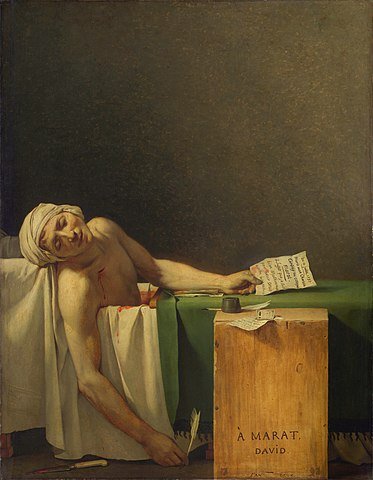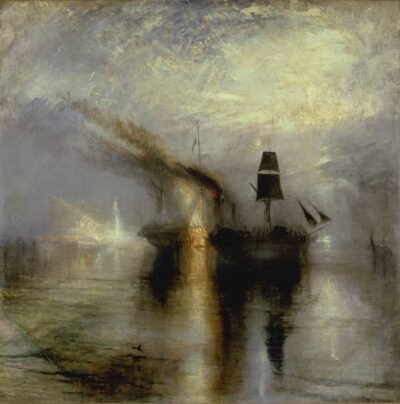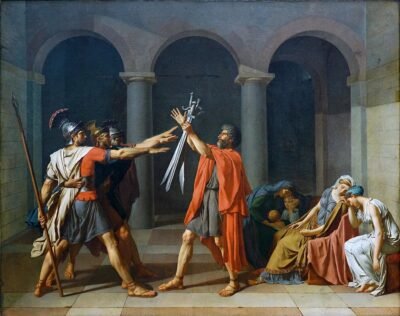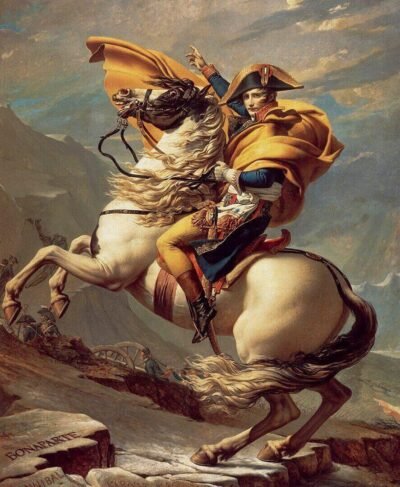Neo-Classicism
Neo-classicism was an art movement between 1760 and 1850 inspired by renewed interest in Classical Greek and Roman art. Neo-classical artists aimed to recapture Classical ideals of order, harmony, and ideal beauty in contrast with the frivolous Rococo style.
Key artists include Jacques-Louis David, Jean-Auguste-Dominique Ingres, Antonio Canova, and Peter von Hess. They depicted noble subjects like heroism, sacrifice, and civic duty. Statues emulated Greek sculptural perfection. Buildings adapted Doric and Ionic columns, domes, and symmetrical plans. Paintings featured simple lines, dignified poses, and moral messages.
Neo-classicism originated in Rome, was influenced by new archaeological discoveries, and spread to Paris, London, and beyond. It represented Enlightenment ideals of reason, virtue, and social responsibility in the arts. Neo-classical works aimed to uplift public morality and revive the spirit of antiquity.
The French Revolution embraced Neo-classicism as a natural expression of its democratic principles. But the movement declined by the mid-1800s with the rise of Romanticism. Still, Neo-classicism left enduring monuments and shaped academic art.
At its best, Neo-classical art conveyed moral resolve and civic ideals. David’s Oath of the Horatii and Death of Socrates used heroic and tragic ancient Roman subjects to represent virtue, sacrifice, and democracy. Canova’s Perseus with the Head of Medusa embodied Greek humanism.
Neo-classicism demonstrated art’s social function in representing shared ideals and cultural heritage. By reviving the art of antiquity, Neo-classical artists found a visual language to shape noble and didactic works that aimed to elevate the human spirit in line with the profound social reforms and institutional changes that defined the end of the 18th century, forging a new Enlightenment civilization out of the ashes of a fallen aristocratic order.
Though now surpassed by subsequent styles, Neo-classicism left enduring monuments to the moral and intellectual concerns of an optimistic age seeking universals of human purpose and guidance for civic duty within the distant
Artists Names
Famous Artists
> Alfred Sisley
> Camille Pissarro
> Caravaggio
> Claude Monet
> Diego Velázquez
> Edgar Degas
> Édouard Manet
> Eugène Delacroix
> Francisco de Goya
> Henri de Toulouse-Lautrec
> Isaac Levitan
> Ivan Shishkin
> Jean Auguste Dominique Ingres
> Jean-Baptiste-Camille Corot
> John Singer Sargent
> John William Waterhouse
> Joseph Mallord William Turner
> Lawrence Alma-Tadema
> Leonardo da Vinci
> Michelangelo
> Paul Cézanne
> Paul Gauguin
> Peter Paul Rubens
> Pierre-Auguste Renoir
> Raphael Sanzio
> Rembrandt Van Rijn
> Vincent van Gogh
> William-Adolphe Bouguereau
Art Subjects
>Abstract Oil Painting
>African Oil Painting
>Angel Oil Painting
>Animal Oil Painting
>Architecture Oil Painting
>Beach Oil Painting
>Bird Oil Painting
>Black and White Oil Painting
>Boat Oil Painting
>Buddha Oil Painting
>Bunny Oil Painting
>Cartoon Oil Painting
>Cat Oil Painting
>Cityscape Oil Painting
>Coastal Oil Painting
>Contemporary Oil Painting
>Daisy Oil Painting
>Dog Oil Painting
>Eagle Oil Painting
>Fantasy Oil Painting
>Figure Oil Painting
>Floral Oil Painting
>Forest Oil Painting
>Fruit Oil Painting
>Genre Works
>Horse Oil Painting
>Hunting Scenes Oil Painting
>Impressionist Oil Painting
>Jesus Oil Painting
>Landscape Oil Painting
>Modern Oil Paintings
>Mountain Oil Painting
>Music Oil Painting
>Nature Oil Painting
>Nude Oil Painting
>Pet Portrait Oil Painting
>Realistic Oil Painting
>Religious Oil Painting
>Scenery Oil Painting
>Seascape Oil Painting
>Season Oil Painting
>Sport Oil Painting
>Still Life Oil Painting
>Sunset Oil Painting
>Textured Oil Painting
>Tree Oil Painting
>War Oil Painting
>Wildlife Oil Painting
Art Movment
>Abstract Expressionism
>Academic Classicism
>Aestheticsm
>Art Deco
>Art Nouveau
>Barbizon School
>Baroque Art
>Byzantine Art
>Cubism
>Expressionism
>Fauvism
>Hudson River School
>Impressionism
>Mannerism
>Gothic Art
>Modernism
>Nabis
>Neoclassicism
>Neo-Impressionism
>Orientalism
>Pointillism
>Pop Art
>Post Impressionism
>Pre-Raphaelites
>Primitivism
>Realism
>Renaissance
>Rococo
>Romanticism
>Suprematism
>Surrealism
>Symbolism
>Tonalism
>Victorian Classicism
Showing all 4 resultsSorted by popularity





